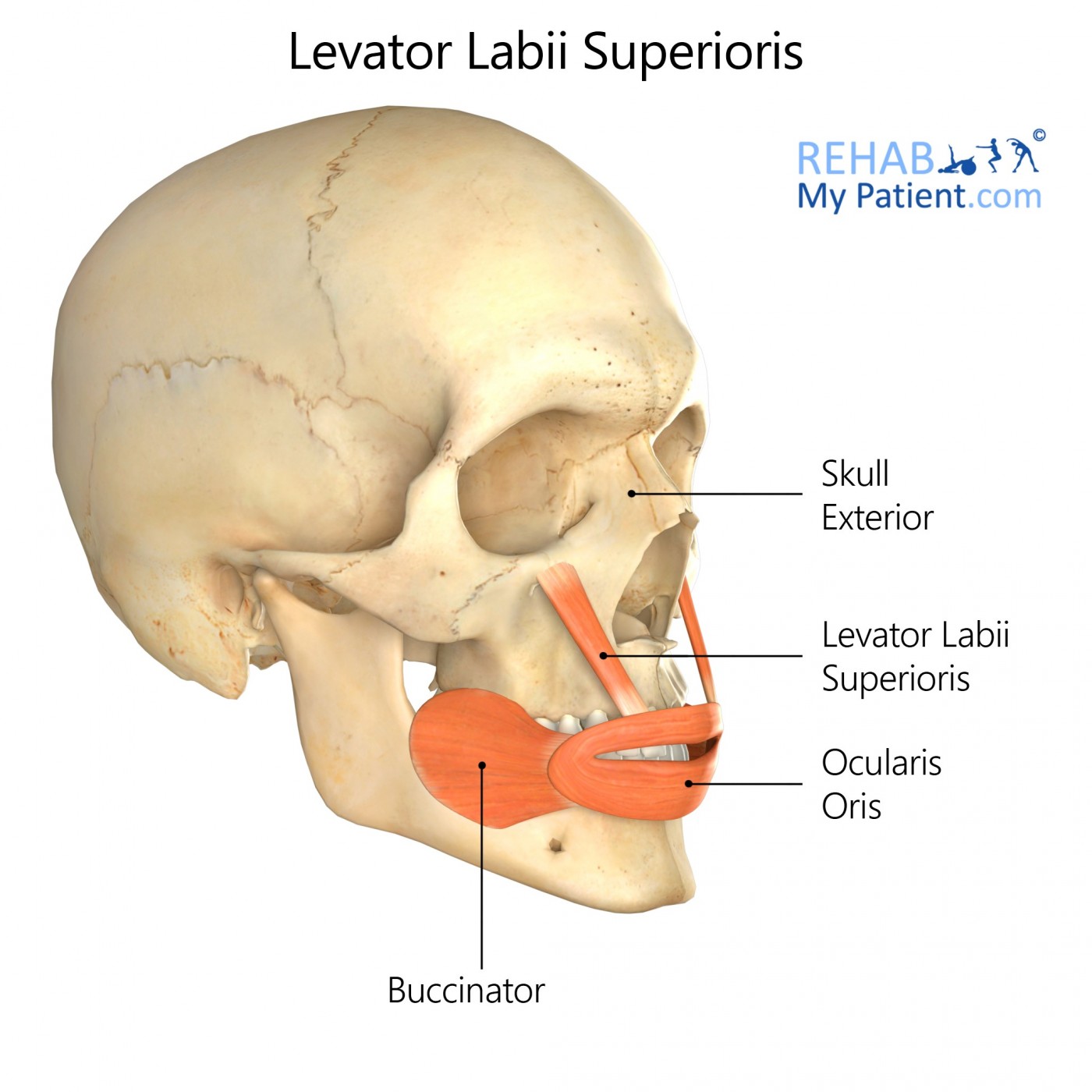
General information
Levator labii superioris is one of the muscles of facial expression.
Literal meaning
The muscle that lifts the upper lip.
Interesting information
Levator labii superioris, also called quadratis labii superioris, is a mouth muscle that is responsible for elevating the upper lip which makes it critical to the formation of normal facial expression as well as speech and nonverbal communication. A characteristic of the facial levator muscles are that they insert at the dermis, rather than in bone as is common with the majority of other muscles in the human body.
Levator labii superioris arises from the maxilla and zygomatic bones just below the orbit and inserts in the fleshy muscle and dermis of the upper lip. It is comprised of three distinct heads: angular head, intermediate head, and lateral head. The angular head emerges from the frontal process of the maxilla inferiorly forms a medial and lateral section. The intermediate head arises from the inferior part of the orbit and joins with muscle fibers from orbicularis oris. The lateral head emerges from the zygomatic bones and also joins with fibers of orbicularis oris but more laterally than the intermediate head.
When levator labii superioris contracts, it raises the upper lip and pulls on the sides of the mouth which results in a slight smirk. Injury to this muscle will cause deficiency in facial expression and thus significantly impact a patient’s life.
Origin
Maxilla and zygomatic bones (below the orbit).
Insertion
Dermis and muscle of the upper lip.
Function
Elevates and everts the upper lip and assists in deepening the nasolabial furrow.
Nerve supply
Facial nerve (C7).
Blood supply
Facial artery.

Relevant research
Myotomy of levator labii superioris has shown to be effective in measurably reducing gingival display (gummy smile) in patients. Post-operative gingival display was recorded as distinctly less than the pre-operative measurements. This suggests that myotomy of levator labii superioris is an effective alternative to conventional treatments including Le Fort impaction and maxillary gingivectomies.
Ishida LH, Ishida LC, Ishida J, Grynglas J, Alonso N, Ferreira MC. (2010). “Myotomy of the levator labii superioris muscle and lip repositioning: a combined approach for the correction of gummy smile”. Plast Reconstr Surg. 126(3):1014-9.
New anatomic findings concerning levator labii superioris have important implications for surgical procedures involving the perinasal region. This study in particular classified the morphology of the muscle into three categories: rectangular, fan, and trapezoid.
Hur MS, Youn KH, Hu KS, Song WC, Koh KS, Fontaine C, Kim HJ. (2010). “New anatomic considerations on the levator labii superioris related with the nasal ala”. J Craniofac Surg. 21(1):258-60.
Levator labii superioris exercises

Facial exercises are especially important for individuals who have suffered loss of facial expression due to stroke or a neurological disorder. Of course, facial exercises are also useful for cosmetic reasons. Levator labii superioris is primarily responsible for elevating the upper lip. To focus on this muscle, stand in front of a mirror so you can see the movement of the exercise. Pucker your lips while bringing your upper lip up towards your nose. Hold this position for ten seconds then release. Repeat the motion a total of ten times.
Sign Up
Sign up for your free trial now!
Get started with Rehab My Patient today and revolutionize your exercise prescription process for effective rehabilitation.
Start Your 14-Day Free Trial